| Type | Battleship | Hull | Steel |
| Displacement | 10,013 tonnes | Engines | 2 triple expansion 3cyl, 10,110ihp, Vulcan |
| Length | 115.7 m | Machinery | Steam turbine, 2 shafts |
| Beam | 19.5 m | Speed | 10 kts |
| Draught | 7.6 m | Complement | 600 |
| Armament | 4x280mm L/40 K, 2x280mm L/35 K, 6x88mm L/30 QF K, 12xMG, 3xTT 450mm SK | ||
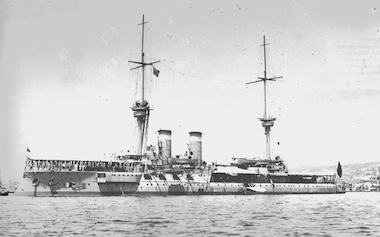
The warship that would later come to be known as Turgut Reis in the Ottoman navy began its life as SMS Weissenburg, an armoured battleship in the Imperial German Navy, part of the Brandenburg class. Its name paid homage to the pivotal Battle of Weissenburg during the Franco-Prussian War of 1870. The ship, construction of which began in 1890, was launched on 14 December 1891, in Stettin, and was commissioned on 5 June 1894, as the fourth and final ship of its class, assigned to the I. Division. In 1899, all armoured ships of the Brandenburg class were reclassified as battleships.
Weissenburg embarked on several voyages, including a trip to Kirkwall and an Atlantic voyage to Northern Spain, following the inauguration of the Kaiser Wilhelm Canal connecting the North Sea with the Baltic Sea. During the Boxer Rebellion in 1900, she was deployed to China as part of the International Expeditionary Force, which aimed to suppress the uprising and protect Western interests. Despite initial objections from Admiral Alfred von Tirpitz, Secretary of State of the German Imperial Naval Office, the ship was sent to East Asia to support the allied forces. The Weissenburg sailed through various ports, including Singapore and Shanghai, participating in the blockade of the Chinese coast.
Following the Boxer Rebellion, Weissenburg remained stationed in the Yellow Sea, supporting landing operations of the International Expeditionary Force in China. However, it returned to Germany in 1901 after the Foreign Office requested the withdrawal of German forces from China.
Upon its return to Germany, the Weissenburg underwent modernization and refurbishment at the Imperial Shipyard Wilhelmshaven, along with its sister ships. It was recommissioned in 1904 and assigned to the II. Squadron as a replacement for coastal defense ships. In 1907, the ship was decommissioned from active service and became the flagship of the North Sea Reserve Division.
In 1910, the Weissenburg was briefly recommissioned for maneuvers and subsequently sold to the Ottoman Empire where it was renamed Turgut Reis, after the renowned Ottoman naval commander and admiral who played a significant role in the expansion of the Ottoman Empire in the Mediterranean during the 16th century. The ship served in the Ottoman Navy during the Italo-Turkish War but did not actively participate in combat. During the subsequent Balkan Wars, it would assume a more active role.
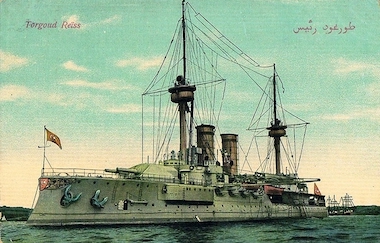
On 12 November 1912, Turgut Reis, along with the Turkish cruiser Hamidiye, shelled positions held by Bulgarian troops in Derkosa. During a subsequent attack on 21 November, Hamidiye was targeted by four Bulgarian torpedo boats, resulting in significant damage and casualties. Despite this setback, further Turkish operations against the Bulgarian coast did not occur.
On 16 December 1912, the Ottoman Navy attempted to break through from the Dardanelles with several ships, aiming to engage in naval warfare in the Aegean Sea. However, their efforts were thwarted in the Battle of Elli primarily by the Greek cruiser Georgios Averoff. Despite sustaining damage and casualties, the Ottoman fleet retreated to the Dardanelles.
A second attempt to break out from the Dardanelles on 18 January 1913, also failed in the Battle of Limnos, with the Ottoman fleet facing heavy resistance from the Greek squadron led by Admiral Koundouriotis.
On 8 February 1913, the Ottoman Navy supported an unsuccessful amphibious assault near Şarköy on the northern shore of the Sea of Marmara. Despite the failure of the attack, Turkish ships effectively covered the retreat of their land forces.
In March 1913, Turgut Reis, along with the sister ship Barbaros Hayreddin, was deployed in the Black Sea to support the front line at Çatalca. They successfully repelled Bulgarian advances on 26 March and supported a Turkish attack on 30 March.
When the Ottoman Empire entered the war on the side of Germany, Wilhelm Souchon, the former commander of the German Mediterranean Division, became the new Ottoman Fleet Commander. He intended to actively engage only in the Black Sea against the Russian fleet, aiming to compensate for numerical inferiority with the speed of his units. However, the two old battleships Barbaros Hayreddin and Turgut Reis were deemed unsuitable for such warfare and were thus assigned to defend the Dardanelles. These ships were additionally manned by German officers.
On the fateful day of 18 March 1915, when the Allied fleet attempted to force the Dardanelles, Turgut Reis was anchored at Maydos. No action was taken. On the first day of the ampihious landings on 25 April 1915, Turgut Reis shelled the British landings in Gallipoli. Later on 5 June, she had to return to Istanbul after a shell exploded on deck. Turgut Reis was laid up at the Golden Horn until February 1918, when it assisted in Yavuz's salvage.
Turgut Reis survived the World War and was recommissioned in 1924 as a training ship for the Turkish Navy. From 1933 onwards, it served as accommodation for shipyard workers at the Turkish naval base in Gölcük, before being dismantled in 1956.![]()
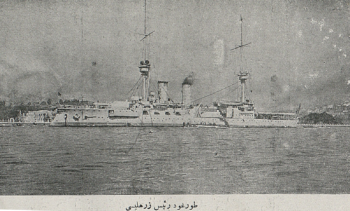
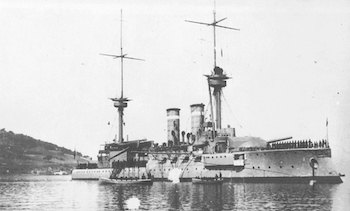
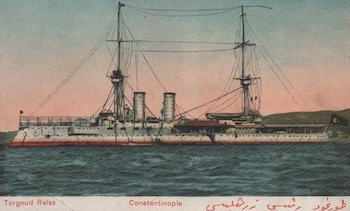
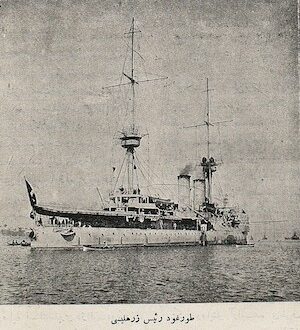
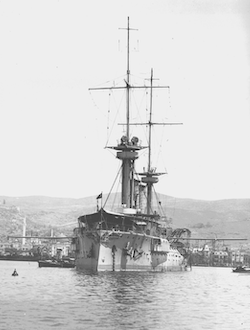
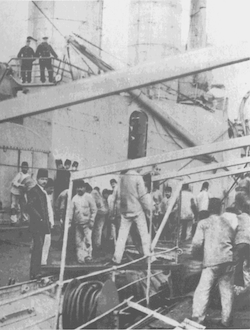
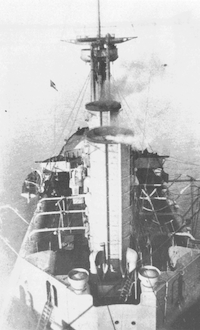
PAGE LAST UPDATED ON 15 MARCH 2024